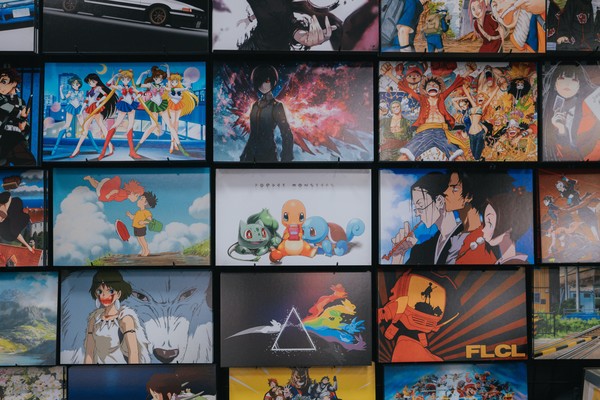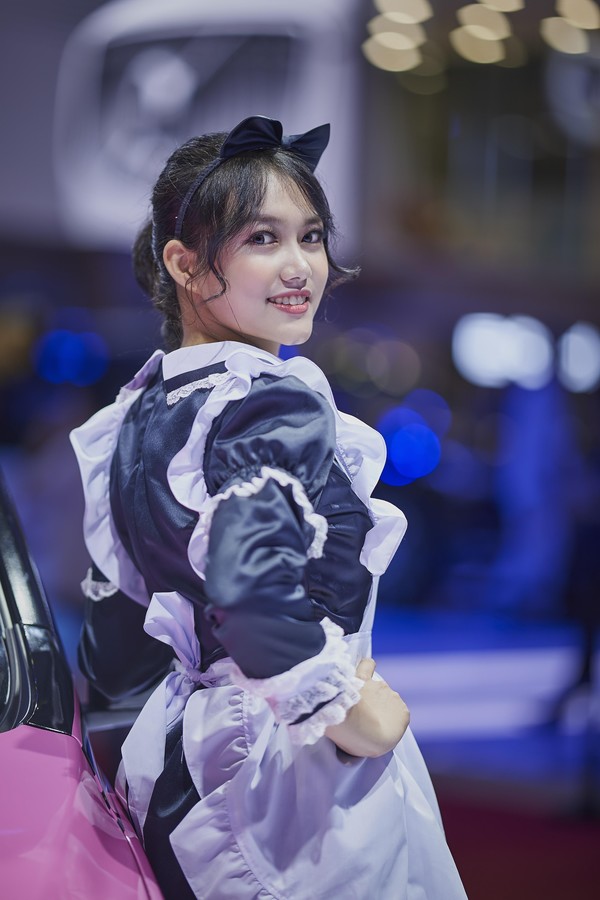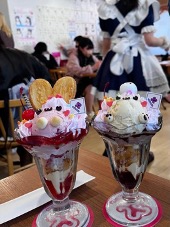A peek into a Japanese maid café
EVEN IF you have not been to Japan, you might have heard of the phrase “o i shi ku na re mo-e mo-e kkyung (get delicious).” This phrase has become a popular meme in Korea by Kim Kyung-wook, who acts as a Japanese club host under the alias “Tanaka,” and is often used by the maids in Japanese maid cafés. The term “mo-e” used in the phrase is an imprecise and subjective concept usually used in relation to Japanese manga. As exotic as it may sound, this article plans to dive into the culture of the Japanese maid café and “mo-e.”
“Mo-e” in Japanese media
“Mo-e” refers to feelings of strong affection mainly towards fictional characters from anime, manga, or video games. According to Patrick W. Galbraith (Associate Prof., International Communication, Senshu Univ.), the definition of the term should meet three standards[1]. First, “mo-e” should be a response to the object that invokes mo-e. Second, “mo-e” should be strictly confined to the feelings of those who are responding, not that of the object that invokes the feeling. Therefore, there is no strict form that invokes “mo-e,” which makes the term subjective and imprecise. For example, a bulky male character can invoke “mo-e” as much as the cute girly characters do. Lastly, the term “mo-e” originated from Japanese manga and anime fan culture.
The advent of the term is said to go way back to the 1990s when a group of manga and anime fans in Japan started a conversation online. While talking about their favorite characters, the computer mistakenly converted the term mo-e-ru, which means “to burn,” into mo-e, meaning “to burst into bud” in Japanese. This then became an in-group slang among the manga community, and has been widely used ever since[2].

Although the object that triggers mo-e can differ by individual, generally, the agreed-upon archetype of mo-e is said to be Rei Ayanami from Neon Genesis Evangelion (Shin se-ki Evangerion)[3]. Representing the cool, cute, and mysterious girl character, Rei has always been one of the most popular manga characters in Japan. The anime series have been a great commercial success, opening room for developing similar characters like Rei in subsequent anime creations.
The “mo-e” has passed onto subsequent anime series such as The Melancholy of Haruhi Suzumiya and K-on!. Without featuring exceptional settings or story lines as the previous anime did, they focus on illustrating the ka-wa-ii[4]ness of the girl characters engaging in daily tasks. With these series also gaining commercial success, the thematization of “mo-e” in animation has rooted itself into Japanese anime. The mo-e is now prevalent in every genre of Japanese manga’s female characters either as a personality trait or physically (through mo-e anthropomorphism).
A Japanese maid café immersed in “mo-e”
Japanese maid cafés are precisely the manifestation of mo-e. Originated from K-on!, the phrase "o i shi ku na re mo-e mo-e kkyung (get delicious)" is often used in maid cafés each time the food is served. Every time the maid serves the menu, she encourages the table to follow along the phrase whilst making a heart with their hands, pointing it toward the food. Maid cafés are ridden with such performances which engage the customers to participate with the maids, invoking a feeling of connection and interaction—a key theme of “mo-e.”
“Maidreamin” is one of the most notable maid café franchises in Japan. All customers are greeted by maids dressed in their costumes along with an individual name tag and a cat ears headband. They all have a supposedly ka-wa-ii voice—high-pitched and soft-toned. All of these traits, which are heavily inspired by “mo-e” Japanese anime series, allow customers to experience the physical manifestation of “mo-e” that one has only seen through the screen.

Although there might be a slight difference depending on the café, the overarching similarity is the heavy use of euphemisms and encouragement of participation. This adds the overall “mo-e” element as it creates a spatial sense of an alternate world far from reality—which parallels the fact that “mo-e” originated from a virtual space of manga. In “Maidreamin,” one must refer to the restroom as a “flower garden” to use the toilet, and the customers are recommended to say “nyang nyang (meow meow)” to call the maid. The coming in and out of the maid café are referred to as “entry” and “departure.”
Each table gets a designated maid to whom the customers order their foods and drinks. The parfaits, as the signature dish, heavily incorporate the ka-wa-ii elements through the names of the menu—cat, dog, and rabbit— and are served with the ka-wa-ii faces of animals with chocolate syrup on the ice cream. Besides the dessert menu, the café also serves alcohol and food such as pasta and omurice[5]. This subtle insertion of “mo-e” in foods enables the customers to experience “mo-e” beyond sight, to hearing and taste.

The commoditization through paid services and goods in the maid cafés is to be noted. The customers are required to pay for the maid’s service apart from the food. For example, taking a group photo with the maids incurs additional payment. The café also sells goods such as keyrings and light sticks, marked with the name of the franchise.
* * *
The market size of Japanese maid and cosplay-related services is estimated to be ¥10.4 billion (₩103.2 billion) in 2022[6]. The commercialization and commoditization of mo-e has developed for years, driven by the consistent great demand. Although it may seem exotic or even strange from an outsider's point of view, it is undeniable that the full and subtle immersion of “mo-e” into the experience provided by the maid cafés could become a sweet escape from reality.
[1] University of Tokyo
[2] Morikawa Ka’ichirō
[3] Neon Genesis Evangelion: A television anime series that aired from 1995 to 1996; The series features the pilots of evangelion, a huge arsenal robot, that fight off the angels, extraterrestrial intellectual beings jeopardizing life on Earth.
[4] Ka-wa-ii: Translates to cute and adorable; But, at the same time, the term refers to the culture of cuteness in Japan, which can refer to both humans and non-human items that are charming, vulnerable, shy, and childlike.
[5] Omurice: A Japanese dish that has an omelette on top of the fried rice with chopped vegetables and hams, flavored with ketchup
[6] Statista

